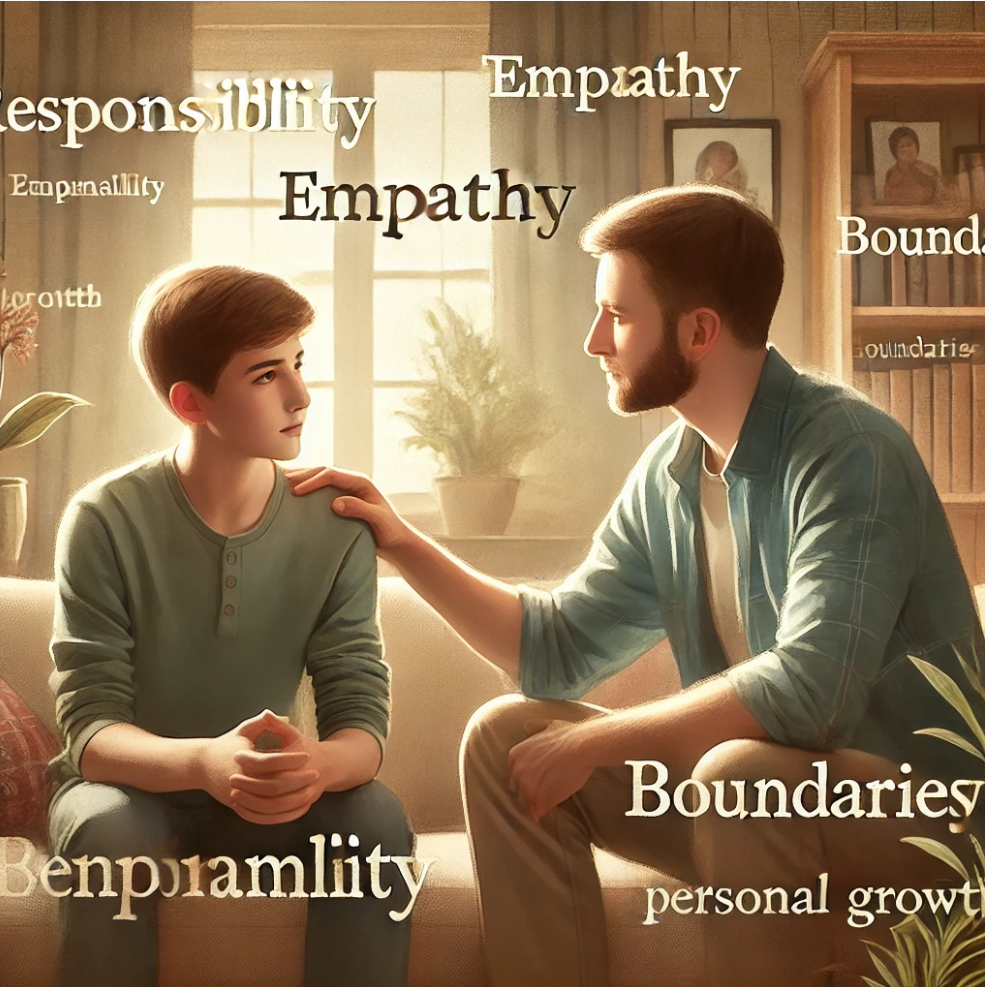Healthy Forms of Validation: Recognizing and Seeking Supportive Affirmation
Validation is the process of understanding, affirming, and accepting one’s feelings, thoughts, or experiences. Receiving healthy validation plays an essential role in building self-esteem, enhancing relationships, and promoting emotional resilience. However, it’s essential to recognize and seek out validation that is healthy and constructive. Here’s an overview of different types of validation and strategies for recognizing and pursuing them effectively.
Why Validation Matters
Validation from others reassures us that our feelings and experiences are understood and accepted. Research shows that receiving consistent, positive validation from supportive people can lead to improved mental health, stronger relationships, and a more secure sense of self (Linehan, 1993). According to self-determination theory, validation can also foster autonomy, competence, and relatedness, which are essential for psychological well-being (Ryan & Deci, 2000).
However, relying solely on external validation can be harmful, leading to dependency and reduced self-esteem. Instead, it’s beneficial to balance seeking validation from others with developing self-validation practices.
1. Types of Healthy Validation
- Emotional Validation: Emotional validation involves acknowledging and accepting someone’s feelings without judgment. This can be as simple as listening attentively, empathizing, and affirming that the other person’s feelings are understandable. Emotional validation reinforces that feelings are valid and that it’s okay to feel what one feels (Linehan, 1993).
- Validation of Effort and Progress: Praising effort rather than outcomes is a powerful form of validation that can reinforce persistence, self-compassion, and growth. Validating someone’s efforts, even if they fall short of success, promotes a growth mindset, where challenges are seen as opportunities to learn rather than sources of failure (Dweck, 2006).
- Authentic Affirmations: Authentic affirmations recognize specific qualities, skills, or positive contributions that a person has shown. This validation should be specific rather than generic to reinforce self-worth in an honest, meaningful way (Wood et al., 2008).
2. Recognizing Healthy Validation
Healthy validation has distinct characteristics that make it different from unhealthy or superficial validation. Here’s how to identify it:
- Respectful and Non-Judgmental: Healthy validation acknowledges your experiences without judgment or dismissal. Research shows that people who validate respectfully build stronger, more trusting relationships (Kross et al., 2014).
- Specific and Genuine: Unlike generic praise, specific and genuine validation is grounded in real examples. For example, instead of saying “You’re smart,” healthy validation might sound like “I noticed how thoughtful you were when you solved that problem.” This specificity makes the affirmation more meaningful and believable (Wood et al., 2008).
- Supportive but Not Enabling: Healthy validation encourages personal growth and resilience. It acknowledges your feelings and experiences without enabling unhelpful behaviors, promoting personal accountability and independence (Ryan & Deci, 2000).
3. How to Seek Out Healthy Validation
While it can be challenging to seek validation directly, there are strategies to create environments and relationships where it naturally occurs:
- Communicate Openly: Sharing how you feel and what kind of support you need can help others understand your perspective and respond in validating ways. Research suggests that people who openly communicate their feelings are more likely to receive affirming responses, as clear communication reduces misunderstandings (Gottman, 2011).
- Seek Supportive Relationships: Prioritize connections with people who genuinely care about your well-being and listen to you. Friendships and relationships that emphasize empathy, understanding, and honest feedback are more likely to offer healthy validation (Reis & Shaver, 1988).
- Set Boundaries Around Validation-Seeking: Being mindful of how and when you seek validation can help prevent over-dependence on others. Seeking validation when genuinely needed, rather than as a habit, can help you distinguish between healthy support and dependency (Neff, 2003).
4. Building Self-Validation Skills
Relying on oneself for validation is a healthy, empowering practice that can lead to greater self-confidence and resilience:
- Practice Self-Compassion: Self-compassion is a form of self-validation that involves treating yourself kindly, especially during challenging times. According to Dr. Kristin Neff, practicing self-compassion can help you become your own source of validation, reducing dependency on external sources (Neff, 2003).
- Acknowledge Your Own Efforts: Celebrating your progress, no matter how small, reinforces self-validation. This practice helps you recognize your own efforts, fostering a positive self-image and reducing the need for constant external approval (Dweck, 2006).
- Mindfulness and Journaling: Reflecting on your experiences, thoughts, and emotions through mindfulness or journaling can help you recognize your feelings and validate them internally. This process strengthens self-awareness and helps you rely less on external feedback (Kabat-Zinn, 2003).
Conclusion
Validation is a powerful element of healthy relationships and self-esteem, but it’s essential to seek out healthy, constructive forms of affirmation. By recognizing the qualities of healthy validation, seeking it from supportive people, and building self-validation skills, individuals can enhance their emotional resilience and improve their overall well-being.

This article has been written by John S. Collier, MSW, LCSW. Mr. Collier has over 25 years of experience in the social work field and is based in London Kentucky through Southeast Kentucky Behavioral Health, LLC. Mr. Collier may be reached by phone at (606) 657–0532 extension 101 or by email at john@sekybh.com.
References
- Dweck, C. S. (2006). Mindset: The New Psychology of Success. Random House.
- Gottman, J. M. (2011). The Science of Trust: Emotional Attunement for Couples. W.W. Norton & Company.
- Kabat-Zinn, J. (2003). Mindfulness-Based Stress Reduction (MBSR). American Psychological Association.
- Kross, E., et al. (2014). Social rejection and the brain. Trends in Cognitive Sciences, 18(1), 15-21.
- Linehan, M. M. (1993). Cognitive-Behavioral Treatment of Borderline Personality Disorder. Guilford Press.
- Neff, K. D. (2003). The development and validation of a scale to measure self-compassion. Self and Identity, 2(3), 223-250.
- Reis, H. T., & Shaver, P. (1988). Intimacy as an interpersonal process. In Handbook of Personal Relationships, 367-389.
- Ryan, R. M., & Deci, E. L. (2000). Self-determination theory and the facilitation of intrinsic motivation, social development, and well-being. American Psychologist, 55(1), 68-78.
- Wood, A. M., et al. (2008). The role of gratitude in the development of social support, stress, and depression: Two longitudinal studies. Journal of Research in Personality, 42(4), 854-871.
This article provides a guide to recognizing and seeking healthy forms of validation based on research and psychological theories. Let me know if there’s any area you’d like to explore in more depth.






















